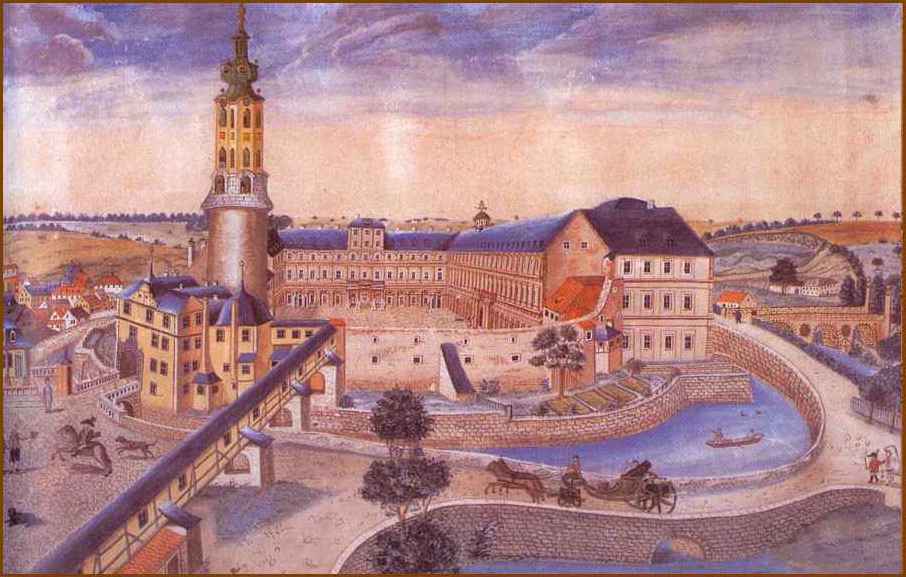
|
|
BACH 707 BACH in WEIMAR
Works for Organ
Nicholas Danby, Martin Neary,
With Herbert Manfred Hoffmann,
* CLICK LINKS TO LISTEN *
Total time 75:15
|
1. Toccata & Fugue in d minor, BWV 565 Nicholas Danby, Pedal-harpsichord
2. Fugue in b minor, BWV 579 on a theme of Corelli
3. Concerto in G Major, BWV 592, after Johann Ernst
4. Concerto in C Major, BWV 594, after Vivaldi Op 7/5
5. Concerto in C Major, BWV 595, after Johann Ernst
6. Concerto in d minor, BWV 596, after Vivaldi Op3/11
7. Fugue in c minor, BWV 574 on a theme of Legrenzi
8. Concerto in E flat Major, BWV 597 |
|
Our disc opens with a dramatic rendition of the ever-popular Toccata & Fugue in d minor, here performed with even greater brilliance on the pedal-harpsichord. After this straight-through performance, a breathless Nicholas Danby commented "that was fantastic!" Though he had been playing the Toccata & Fugue since he was 12 years old, it was the first time he had performed it on the pedal-harpsichord. This Weimar work is full of youthful exuberance and vigour.
The six Concertos for Solo Organ or Pedal-harpsichord, BWV 592-597 were all Weimar transcriptions of the works of Bach's contemporaries – mainly Duke Johann Ernst (the talented young nephew of Bach's employer at Weimar), and Vivaldi. It has generally been accepted that Bach's transcriptions were simply learning exercises. However the level of composition already reached and evidenced in his Weimar instrumental and organ works, as well as those of earlier years, hardly shows need for simple transcription as a means of further education. More likely was the challenge of accurately transforming an orchestral concerto, with its alternation of soloists and full orchestra, into a work for solo instrument, albeit a two manual harpsichord with its ability to couple keyboards for a tutti effect. This would have been an interesting and amusing way for Bach and his fellow musicians to familiarize themselves with the currently fashionable compositions without the need for orchestral parts and the gathering of the full band. The technique of rendering an orchestral form as a solo harpsichord piece would be re-visited many years later at Leipzig with the Italian Concerto, BWV 971. Bach familiarized himself with, and enjoyed the works of other composers, sometimes performing, sometimes adapting, and at other times taking only the theme, which he would then work out quite independently. The Fugue in c minor, BWV 574, included on this disc, is an example of Bach's own development of a theme by Giovanni Legrenzi (1626 - 1690). The performances on this disc are given added variety by the alternating use of organ and pedal-harpsichord. The Frobenius organ, completed 1965, in the chapel of Queen's College, Oxford, has two manuals and pedal, with 22 speaking stops. The pedal-harpsichord was much in use as a domestic practice instrument in baroque times, avoiding as it did the necessity to practice in a cold church and to pay someone to pump! The instrument used in this recording is by John Feldberg of Sevenoaks, Kent. The keyboard section is their model F3, having two manuals, with an 8' and a 4' on each, and a 16' on the lower. The separate pedal section also by Feldberg has three sets of strings, 16', 8' and 4'. In these works one might say that we find the happy combination of the elaborative work of a youthful Bach, based on Bach's own selection of some of Vivaldi's brightest and best compositions. For tonal variety we alternate between organ and pedal-harpsichord, with a further contrast of organ sound provided by the historic Stumm organ of 1783 in Amorbach.
|